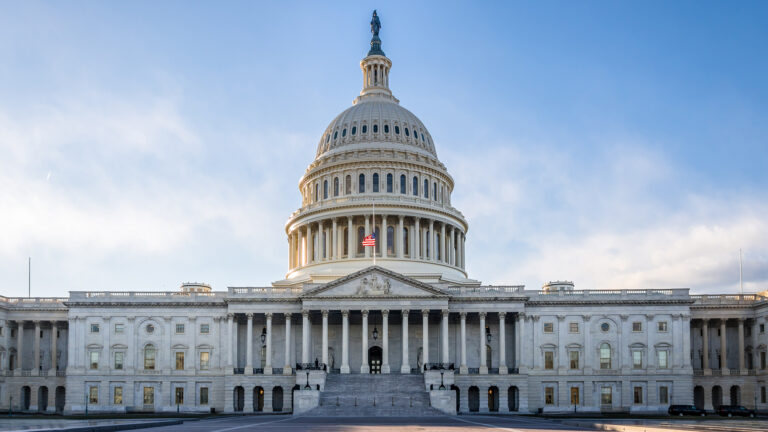By Mario Marroquin
To catch a glimpse
of what it takes to balance the competing interests of a sovereign oil fund and
navigating the corrections to the equity and fixed income markets, look no
further than Marcus Frampton, the chief investment officer of the Alaska Permanent
Fund Corporation (APFC) in Juneau, Alaska.
APFC has been funded
by mining lease revenues since British Petroleum began extracting oil from the
Prudhoe Bay Oil Field in the 1970s. And while this means that rising energy
prices since 2021 have been tailwinds for the fund, there is no denying global
politics, the Supermajors and a recent growing trend of environmental, social
and governance (ESG)-motivated investors are all affecting APFC, Frampton and
his outlook on the market.
In a recent
interview with Markets Group, Frampton talked about his work at the $79.5
billion AUM sovereign wealth fund since joining in 2012, his outlook on oil and
perceptions, and finding the right approach to long-term energy investments.
Markets Group: APFC sits at an intersection of the energy
markets, oil, and international politics. There is a lot of international
politics unfolding right now, specifically with what is happening with the Ukraine
and Russia. But being that you are managing this fund that is so connected to
all of these separate facets of the world, could you tell us how that has
affected your investment strategy?
Marcus Frampton: With energy oil prices over $100 per barrel,
our royalty income is up, so it is roughly $700 million to $800 million a year
at today’s prices; it was more like $300 million to $400 million a year when
oil was lower. We are getting a little more of the royalty income, but at $80
billion [AUM], that is not a huge needle mover for us at this point.
There have been some
opportunities to develop oil and gas in the state that have not really
proceeded because of some of the aversion to financing Arctic oil on Wall
Street right now. We certainly have observed the underinvestment in oil and gas
that has occurred, which unfortunately has given Russia – a big oil and gas
producing state – a lot of leverage and geopolitics.
It is sad to see
where things have come, but in some respects, it is a predictable outcome. Up
here, we certainly would like to see more investment in domestic energy that
has occurred. And that probably will be forthcoming given what people are now
realizing about relying on countries like Russia for their energy.
MG: A majority (52%) of the fund
is allocated to stocks and bonds; can you tell us how you are addressing the
market correction for these securities?
MF:
2022 has
been a tough year for traditional assets – stocks and bonds. It is hard to have
a crystal ball on the back half of the year because just this morning [July
13], there was a higher-than-expected CPI print.
Speculations
are restarting on how aggressive the Fed is going to be raising [interest]
rates. At the same time, the economy is slowing. We have seen a relatively flat
yield curve.
Investors
seem to be of the view that the Fed is going to hike aggressively, but maybe by
next year it will be easing again.
We
have responded by generally trying to stay close to our benchmark weights. On
fixed income, I do not have a strong view on where rates are going to be in a
year.
The
camp of people that think the Fed is going to have to keep hiking for a couple
of years is as strong as the camp that thinks we are headed for a recession and
the Fed will have to loosen [interest rates].
The
real scary scenario would be both a recession with high inflation and I do not
think I can really predict how the Fed will act in that scenario.
So,
on fixed income, we are kind of neutral. On equities, we are fairly bearish
right now. We are about 4% under our target weight for equities, which is a big
position for us – for a big asset class to be that underweight – but our view
is that the market has priced in interest rate increases, so the discount rates
are higher, but they have not really priced in earnings weakness.
You
still have a fairly expensive stock market by historical standards. [We are] potentially
going into recession and Fed hiking is ominous. So, we are pretty cautious on
equities right now.
MG:
Three to
five years out , can we expect any changes in the investment teams for equities
and fixed income? How about tactical, short-term strategies?
The
area we have been most constructive on is absolute return. We have been adding
some commodities managers that we did not have in the past.
Macro
hedge funds this next decade could be a very different environment from the
last decade, and I think some hedge fund strategies could be really well-suited
to navigate it. If you are looking at a three- to five-year horizon, one of the
most interesting open points will be how venture capital and private equity perform
in that environment. We have been in this period where a lot of capital has
shifted over to those private equity markets and valuations have gone up. It is
possible that those markets could perform very poorly over the next five to six
years. Time will tell.
And
that would be a big shift because, right now, most people are looking at
private equity [and] venture capital as the one area of their portfolios where
they can earn more than a 6% or 7% return.
Most
consultants have like a 6% or 6.5% projected return for global equities. Then
private equity up at like 8% or 9% return.
A
lot of people are kind of piling into private equity and venture for that
premium return and it may not be there for them over the next five years. It
will be really interesting to see how people shift asset allocations to reflect
that. But I think hedge funds are really interesting here.
We
are tapping the brakes a bit in private equity just given the market dynamics.
MG: APFC’s
third-largest allocation is private equity, and the fund is increasing
allocations towards real estate by 1 percentage point every year for the next
three fiscal years. Can you talk us through how these two classes are evolving
in response to the market and institutional capital chasing these asset
classes?
MF:
We managed our
target allocations and so like I said, we are 4% underweight stocks, which is a
big position for us. Everything we do is a little bit on the margin.
For
real estate, you mentioned [it will go] up 1% a year for the next three years.
That is not a huge move, but each 1% is $800 million for us.
We are
looking to put a few billion dollars to work in real estate in the next few
years.
[Real
Estate] has a different objective than private equity where we are looking for
those premium returns. For real estate, we want to hold directly very high-quality
properties that give us inflation protection.
We
are actually not really doing anything in the real estate private equity funds
where you get your capital drawn down and they reposition things and exit. We are
either developing building to core or buying core properties that are very
resilient, almost Class A trophy-type assets.
MG: Over the last couple of years, there has been a
move of institutional capital towards real assets including commodities, real
estate and infrastructure as a means to hedge exposure to inflation; obviously,
APFC sees real estate as an attractive investment during periods of heightened
inflation, but do you see infrastructure like ports, or energy infrastructure
as potential investments in the horizon?
MF: We have added a gold position. We have about 1%
of the fund invests in gold.
Anyone that follows gold knows it has been a disappointing;
it is down calendar-year-to-date in a period where no one in January thought
inflation would be 9% mid-July and Russia invading Ukraine.
That should be the best set-up for gold. I think people are
getting a real unique opportunity to get exposure to it right now at a discount
to where it was six months ago when all these things have happened that should
benefit gold. I feel like you are getting insurance for like the current
environment without paying up for it.
The third factor I would have thought would have made gold
do better is just how Bitcoin has not served the role that people had hoped it
would. Bitcoin is down quite a bit year-to-date, while gold is down slightly. I
think gold has that role of the purest way to preserve wealth in an uncertain
environment.
MG: In previous interviews, you have warned against
the perception that energy infrastructure assets are unilaterally inflation
hedges; can you walk us through why you think these assets are not guaranteed
hedges against inflation?
MF: The question of what is a good inflation hedge is
not fully knowable.
In particular, with infrastructure, there are assets that
are very vulnerable to inflation. For example, a renewables project under a
long-term fixed price power purchase agreement would be vulnerable to inflation
– like owning a long-duration bond that is not inflation indexed.
There are a lot of those assets in infrastructure in large
part because the sponsors, admirably, are very focused on reducing risk, so
they are trying to lock in cash flows. But if you lock them in a fixed manner,
then you own a bond and you are inflation exposed.
There are areas of infrastructure like toll roads that
should provide very good protection and others, like contracted power and
renewables, that I think are exposed, but it is kind of unknowable.
I think energy has proven over time – oil and gas stocks –
to be good inflation hedges. But you could have an inflationary episode in the
future where that is not the case.
We are overweight on oil and gas stocks. Unfortunately
demand keeps kind of growing for oil and gas, we have not really weaned
ourselves off it and those commodities do go up when there is inflation.
The key is to have kind of a mix of things, but then also to
be really thoughtful about it and not [put it in a bucket] as just
infrastructure.
[In infrastructure], there are good assets for inflation and
there are bad assets.
MG: What market indicators would you say allocators
investing in energy should pay special attention to in the second half of 2022
and into 2023?
MF: Even though the markets are off a little bit, I
think we are still in an expensive environment for many types of investment.
Private real estate is still trading at very low cap rates –
in many cases 4% or lower – and stocks are expensive.
I have not seen that much of a reset in private equity deals,
I think people should be very valuation-sensitive. We could be going into a
really uncertain environment for the next three to five years.
If you have some real value discipline on entering
investments, you are in a better position than if you are the person that paid
up for something at this point.
I think people should be very cautious and they should hold
extra cash.
They should be maybe a little underweight on stocks and be
in a position where they can react to unexpected events in the future.
MG: APFC is about to file its annual report; are
there any particular investments that have done surprisingly well this year
despite the market corrections, or any ‘surprises’?
MF: We should
be finalizing our numbers in the next month or two and I think it is looking
like we probably lost a couple percentage points on the fiscal year at the end
of June.
Most institutional funds will be down just given where
stocks and bonds were, but we have had
some strong areas like hedge funds, for example. Calendar year to date we have
made about 5% in them as stocks and bonds are down double digits.
So that is encouraging.
We have had a great year in real estate and that has been a
tough area for us for a long time. We owned too much retail, too much mall-based
real estate and not enough apartments and industrial and that really hurt
performance for us for the last few years.
This year is the first year we have our sector weights in
line and beat our benchmark in real estate.
Real estate and hedge funds have been real bright spots for
us this year. And actually, we beat our benchmark in stocks and bonds as well,
so even though those markets are down, our portfolio managers have had a good
year.
MG: We covered a lot of ground about the fund, the
kind of work that you do and how you are reacting to the market. But it if you
had to pick one any of the topics we have discussed today, what would you say
keeps you up at night or is taking the most energy out of you right now?
MF: I am concerned about the macro factors that we
discussed; the potential for a high inflation and a slowdown in the economy. It
would be really bad for the stock market, so even though we are underweight
stocks, that is the largest portion of our portfolio.
I have mixed feelings about it in that I want things to turn
out well for lots of reasons, including that we own a lot of stocks, but I am
kind of bearish.
We will perform well relative to our benchmark, if stocks go
down, but I am just so aware that our stakeholders need positive returns. That
probably is what keeps me up at night the most, even though I am underweight
stocks. It is just what the next environment looks like and what it means for
the stock market.












